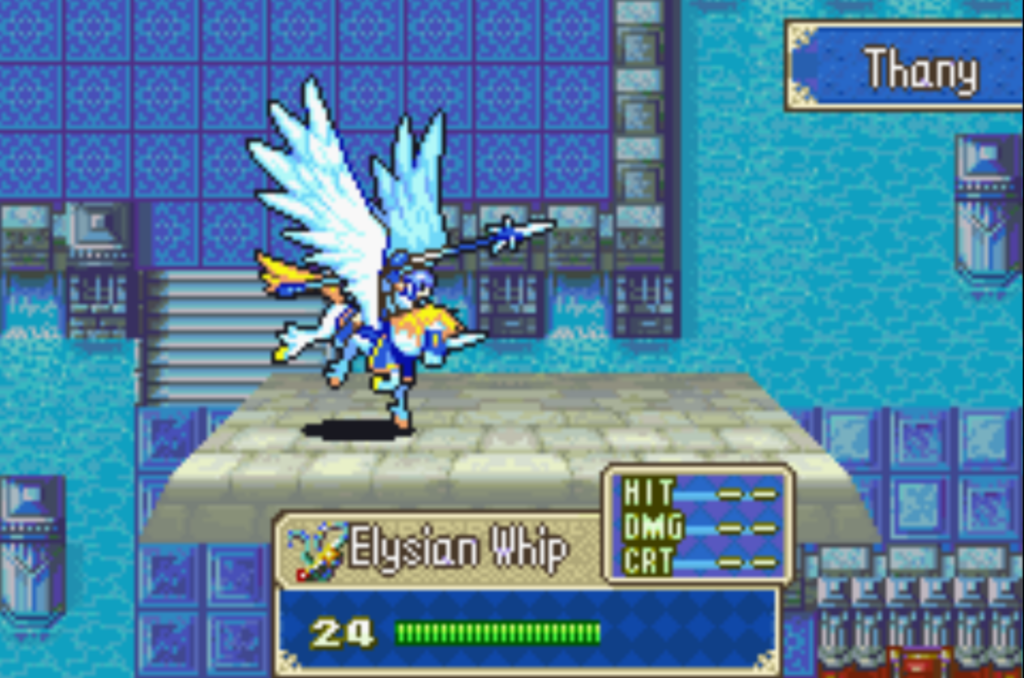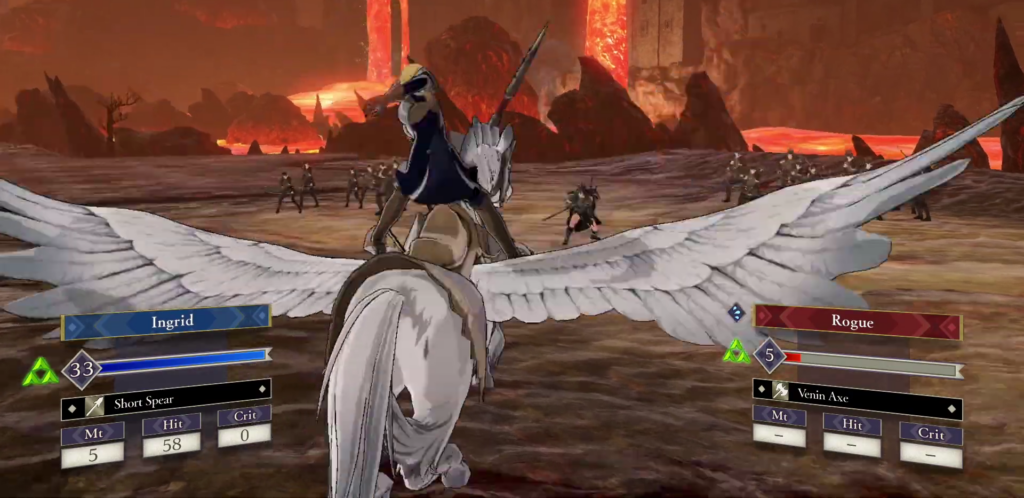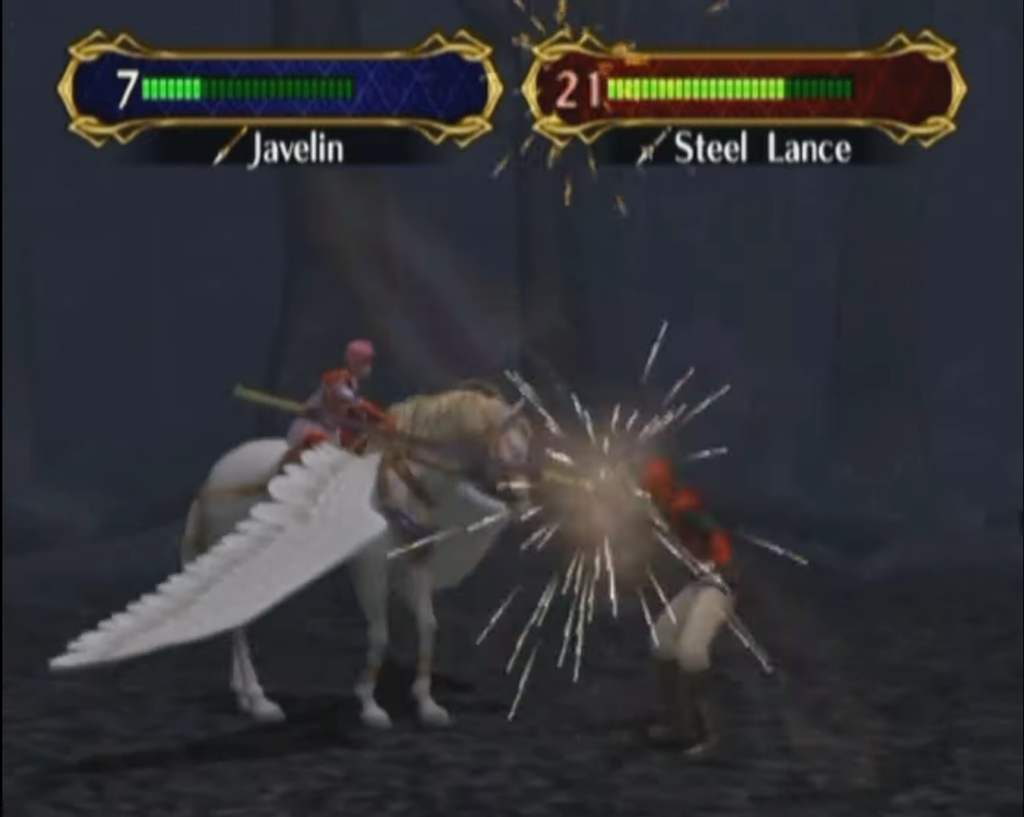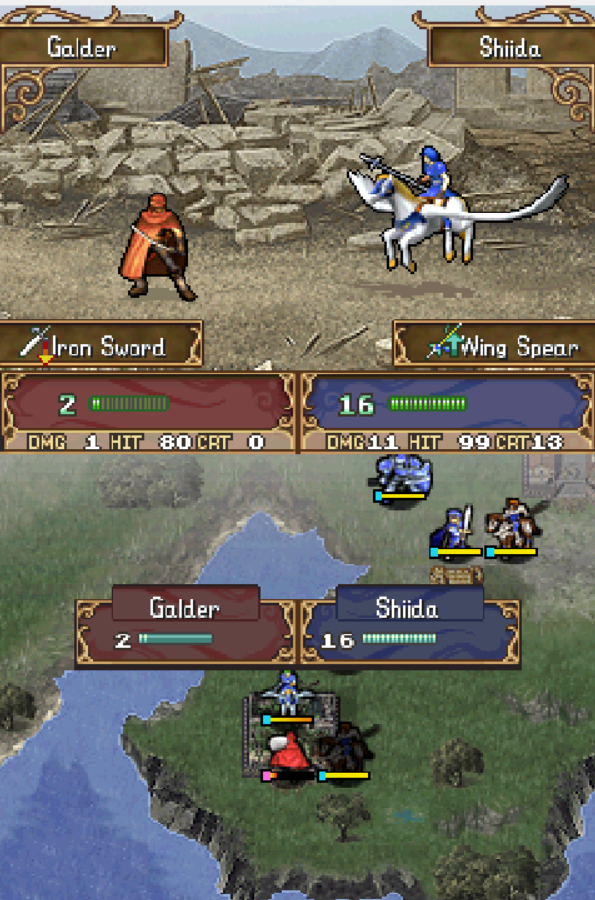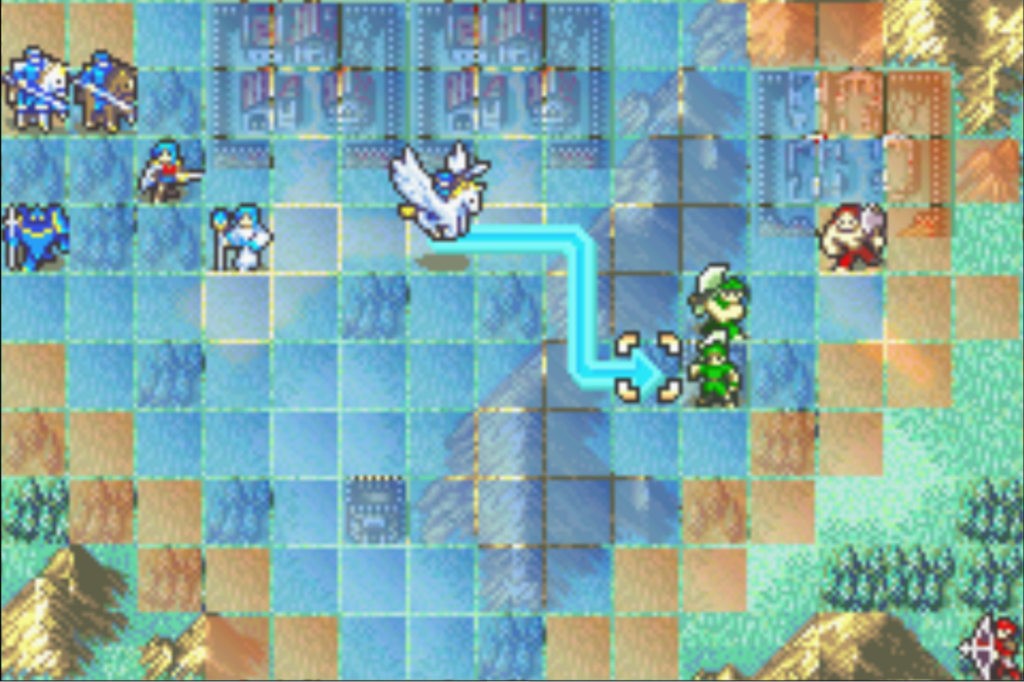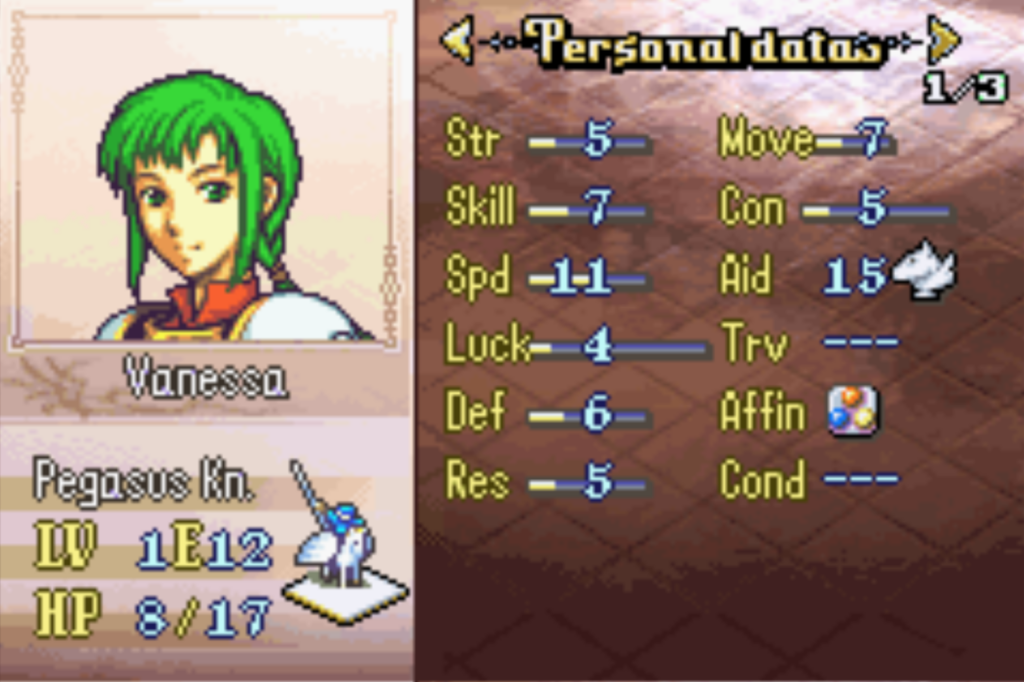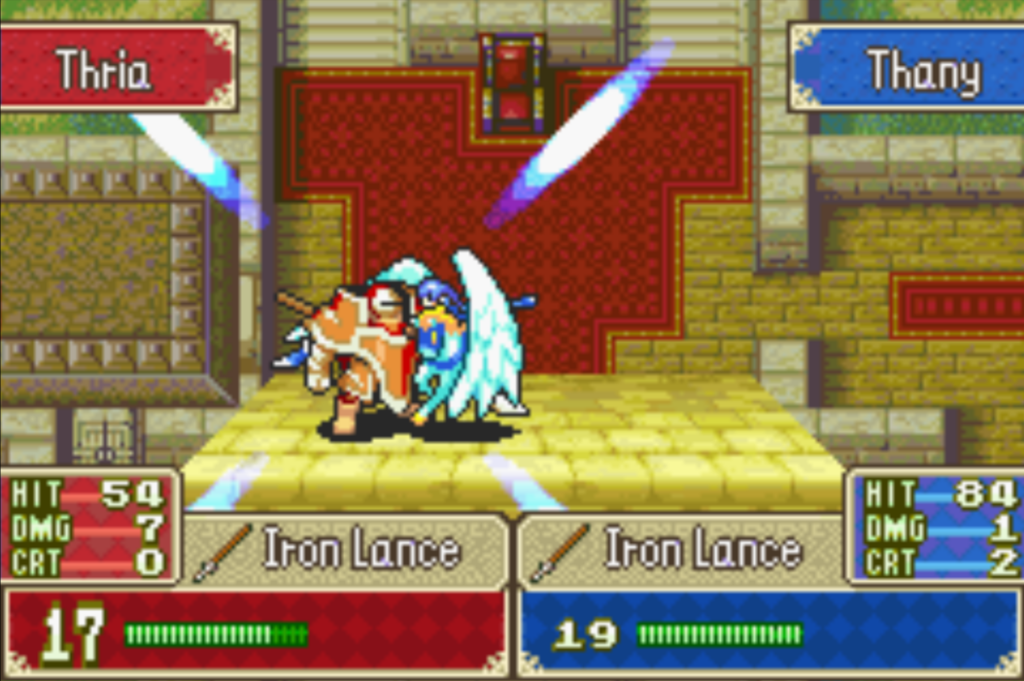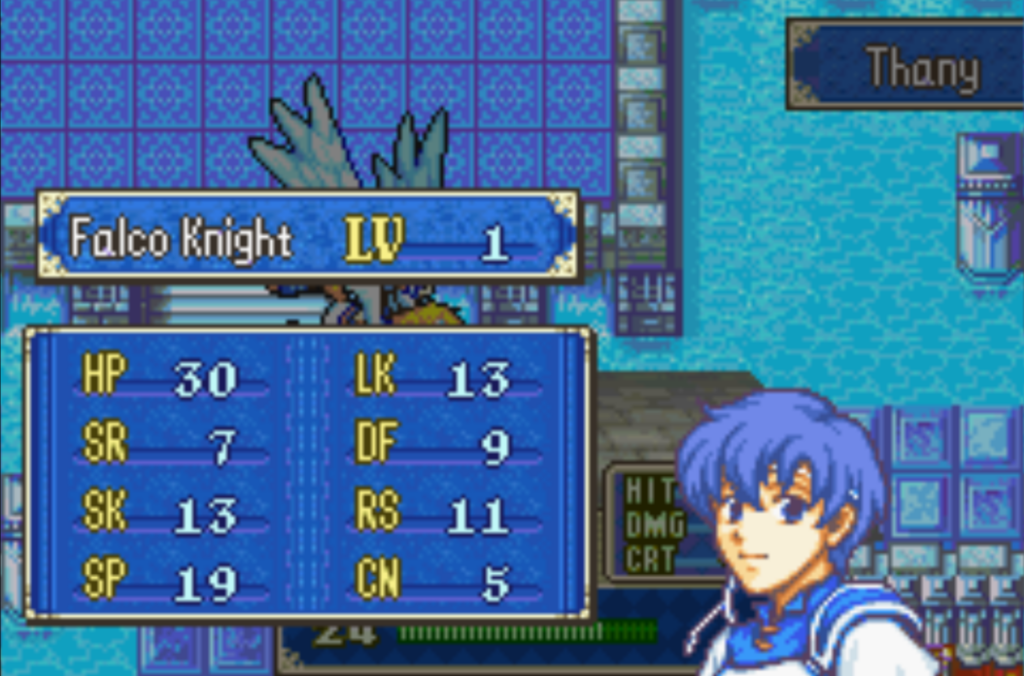- Fire Emblem Wyvern Rider - June 23, 2022
- Fire Emblem Assassin - June 8, 2022
- Fire Emblem Wyvern Lord - June 8, 2022
The Fire Emblem Pegasus Knight, alongside Wyvern Rider, is the most iconic flying unit in Fire Emblem. And while everyone else is stuck on the ground, Pegasus Knights soar free through the skies. Channeling their inner eagle, they swoop down to pick off their foes with ease.
Before Fire Emblem, the only Pegasi I can think of came from Digimon and Yu-Gi-Oh. Both Maximillion and Firewing Pegasus (Which was a pretty good beatdown card back then). But as a mounted unit that goes beyond even Paladins, I immediately knew that Pegasus Knights had to be pretty potent units.
And are they? Well, let’s find out.
History of the Pegasus Knight
The Pegasus Knight debuted in Shadow Dragon & the Blade of Light. The first Pegasus Knight that we see is Princess Caeda.
The first incarnation of the Pegasus Knight is a little different from the modern-day version. The Pegasus Knight originally had immediate access to both Lances and Swords (Modern-day Pegasus Knights don’t gain Sword access until after promotion). But given the lack of the Weapon Triangle system, it didn’t mean as much as you might think. The Pegasus Knight’s first promotion class was the Dracoknight, which is something that I always found pretty funny. Here you have a girl riding atop a flying horse, and then out of the blue, she’s like, you know what? A flying horse just isn’t doing it for me. Someone fetch me a dragon.
In Fire Emblem Gaiden, Pegasus Knights lose access to Swords but gain a new promotion class, the Falcoknight. In Fire Emblem Gaiden only, Falcoknights deal triple damage to Monster-type enemies. Intelligent Systems reverted to their original promotion format in Mystery of the Emblem, with Pegasus Knights promoting into Dracoknights again. Mystery of the Emblem also introduced a new mechanic for mounted units: the ability to dismount. While dismounted, Pegasus Knights turn into one-of-a-kind Knights and use Swords instead of Lances. They are also significantly weaker than they are while on their mount.
Genealogy of the Holy War switches Pegasus Knights back to how they were in Gaiden and solidifies the Falcoknight as the de facto promotion class of Pegasus Knights. They regain access to Swords and can even use Staves after they promote. Thracia 776 brought back the dismount system before it went into a lengthy retirement until Three Houses. It also made the Pegasus Knight a tier 2 class, with the Pegasus Rider serving as the tier 1 class. The Falcoknight is not playable in this installment, and as such, no access to eventual Staves.
The Pegasus Rider was short-lived, and the Pegasus Knight was once again a tier 1 class in the GBA era of Fire Emblem games. The Pegasus Knight was pretty set in stone at this point, with the Falcoknight as its’ promotion class. The only notable change Intelligent Systems made was giving players the option to promote into Wyvern Knights in The Sacred Stones.
The Tellius Saga games remove the option of promoting into Wyvern Knights, with the Falcoknight being the only promotion option in Path of Radiance. In Radiant Dawn, there are no Pegasus Knights, but there are Falcoknights. Falcoknights gained a tier 3 promotion option in the very cool-looking Seraph Knight. The Seraph Knight gives me strong Knights of the Zodiac vibes and is one of my favorite classes in the series.
For the remakes of the Archanea Series games, the Dracoknight is brought back as the primary promotion class of Pegasus Knights, though you can still promote them into Falcoknights. Fire Emblem Awakening makes the first significant change to the Pegasus Knight class in a long time, giving them a new promotion option: the Dark Flier.
The Dark Flier gives units access to Tomes, giving the player flying magic-users with which to wreak havoc. Dark Fliers retain the Pegasus Knight’s unsurpassed Movement capabilities and gain access to a potent secondary attack option. Given how many units in the series have mediocre at best Resistance stats, it was a bold move that makes an already strong class even more so. They don’t gain access to Swords like Falcoknights, but the tradeoff is worth it to me.
The new promotion doesn’t last long for Pegasus Knights. In Fates, the Dark Flier became its own tier 1 class. Pegasus Knights were a Hoshidan class and renamed Sky Knights. Sky Knights could promote into either Falcoknights or the new Kinshi Knight. Falcoknights lost access to Swords and regained access to Staves for the first time since the Genealogy of the Holy War. Kinshi Knights opt to use Lances and Bows. The classic Pegasus Knight does appear in Fates but as a DLC class.
In Fire Emblem Three Houses, the Pegasus Knight is one of many promotion options for female Commoner or Noble units. Your unit must pass the Certification Exam and be at least level 10, have a D rank in Flying, a C rank in Lances, and an Intermediate Seal. The Falcoknight is again their de facto promotion class, and they are back to using Lances and Swords.
What Makes A Pegasus Knight?
Pegasus Knights are a mostly female-only class of mounted units. There are a handful of enemy male Pegasus Knights here and there scattered throughout the series, but multiple games reveal these flying horses typically aren’t very fond of men. As a result, most Pegasus Knights are women. Many Pegasus Knights fall under the Whitewings archetype. The Whitewings are a trio of Pegasus Knights from the first game, consisting of Palla, Catria, and Est. Several incarnations of the Whitewings are sister trios, though unrelated Pegasus Knights trios also fall under the Whitewings archetype.
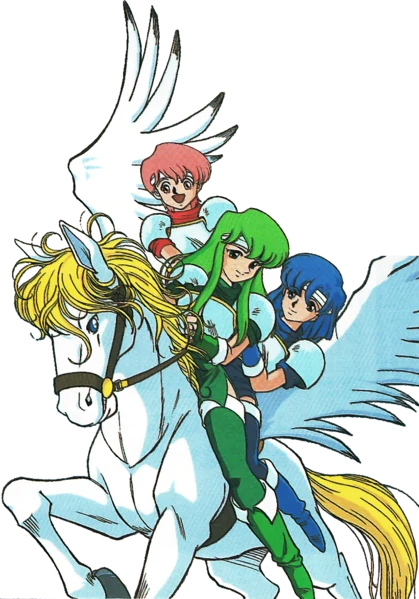
Whitewings Pegasus Knights have a unique combat ability known as the Triangle Attack. Pegasus Knights are not the only characters capable of utilizing this attack, but they are the units that use it the most. They also have the easiest time setting it up due to the unrivaled mobility of Pegasus Knights. To use the Triangle Attack with your Pegasus Knights, surround an enemy in a triangle formation and initiate an attack. Your move will deal three times more damage to the enemy.
As cool as it sounds, it’s a pretty niche and impractical ability. The turns you spend getting two units into formation could’ve been used to land three separate attacks. The enhanced damage is sweet and comes most in handy against bosses, but it’s not always possible to surround a boss (Such as when they’re on a throne or guarding a castle gate). Still, I recommend people try it at least once.
Many games in the franchise, particularly the GBA era games, follow a similar formula. You will receive one Pegasus Knight unit very early on that’s pretty weak initially but becomes very strong as you train her. A second Pegasus Knight typically appears somewhere in the early midgame. She will be roughly the level of your first Pegasus Knight if you’ve been training her, but her bases will be inferior unless your first Pegasus Knight has been screwed over by RNG when leveling up. Despite her (Usually) weaker base stats, your second Pegasus Knight still makes for a powerful unit because of her class.
The third “Pegasus Knight” will be a Falcoknight, the eldest sister or mentor figure of the other two, and will have subpar bases for her join time. Because of this, she will almost always be the worst of the three. But like the second Pegasus Knight, she will still be a good unit because it’s borderline impossible to be a terrible Pegasus Knight/Falcoknight.
As for the typical stat spread of Pegasus Knights, let’s start with the obvious: they can get around. Flying allows them to ignore tricky terrains like mountains and seas and essentially shortcut around maps. Their high Movement is excellent for ferrying low-Movement infantry units to the front lines, securing villages or critical chokepoints, and rescuing allies or neutral units. The latter especially comes in handy on maps where all green units need to remain alive to get the best reward.
Pegasus Knights tend to have great base Speed. With their above-average growth rates, they start doubling enemies quickly. They rarely have Skill problems either, so you don’t have to worry about accuracy much (Except early game bosses). Pegasus Knights also stand out as the best physical unit for dealing with enemy magic users early on due to their higher-than-average Resistance. Going back and forth with boss mages is a decent method of farming experience with your Pegasus Knights in the early game.
No class is without flaws, and the Pegasus Knight is no exception. Pegasus Knights are exceptionally frail. They are on the frailty level of Thieves but take longer to become Dodge Tanks. You have to be very careful how you use your first Pegasus Knight. Two hits from nearly any melee unit, except Thieves, will likely kill her. Pegasus Knights tend to have decent HP growth rates but poor base HP, so they are ideal candidates for Angelic Robes. Their Defense bases tend to be okay at best for their join times, but their growth rates are almost always below average. Since Pegasus Knights can reach areas 99% of other units can’t, their best defensive strategy for a while is to stay out of harm’s way. Far out of harm’s way.
Pegasus Knights, like all flying units, are especially weak against Bows. A single arrow is enough to kill your Pegasus Knights early on. After a significant amount of training, they should be able to live a single shot. Since their Speed stat is always high, they don’t need to be concerned about enemies doubling them except for enemies with Brave Bows. I don’t recommend trying your luck against Archers or Snipers with more powerful weapons, like Silver Bows. Their weakness against Bows also extends to Ballistae. These don’t appear too often in the series but are annoying when they show up, as your flying units are effectively ground until you deal with them.
Pegasus Knights are also susceptible to Wind-based magic spells like Aircalibur. Unlike Bow-users, which Pegasus Knights can dispatch at close range safely, they can’t do this against mages. As a result, mages can become even more dangerous foes to your Pegasus Knights if you’re careless. Enemies don’t tend to have Wind magic until pretty late in a campaign, so your unit should have strong enough Resistance to deal with them when they show up. I nevertheless highly recommend giving a Delphi Shield to your best Pegasus Knight as soon as you get one.
The Pegasus Knight’s biggest weakness is Strength. Their damage will be pitiful at first, especially if you are using a Slim Lance. Durable foes like Knights, Wyvern Knights, and most boss enemies will laugh at their attempts to attack. Attempting to offset their poor Strength by using heavier weapons will slow them down and make their attacks inaccurate. You will need to carefully set up kills for them on enemies like Cavaliers and Soldiers. Since many early games have a lot of Axe-users like Fighters and Brigands, training your first Pegasus Knight can be a chore.
There will be times when you won’t get a single additional point in Strength after ten level-ups. If one of your Pegasus Knights gets screwed over by their Strength growth, you may have to promote them early so they can keep up. Since they typically share promotion items with Wyvern Knights, units that typically don’t join before the midgame, you don’t have to worry about competition. You can try salvaging them with items that boost Strength or designate them a more supportive role and try again with a different Pegasus Knight to be more combat-oriented. They will still be one of the most valuable units in your army, even as utility characters.
How Many Playable Pegasus Knights Exist In Fire Emblem?
Currently, there are 21 playable Pegasus Knights in Fire Emblem.
- Caeda (Shadow Dragon & the Blade of Light, Mystery of the Emblem, Shadow Dragon, New Mystery of the Emblem, Awakening, Warriors)
- Palla (Shadow Dragon & the Blade of Light, Gaiden, Mystery of the Emblem, Shadow Dragon, New Mystery of the Emblem, Echoes: Shadows of Valentia)
- Catria (Shadow Dragon & the Blade of Light, Gaiden, Mystery of the Emblem, Shadow Dragon, New Mystery of the Emblem, Awakening, Echoes: Shadows of Valentia)
- Est (Shadow Dragon & the Blade of Light, Gaiden, Mystery of the Emblem, Shadow Dragon, New Mystery of the Emblem, Echoes: Shadows of Valentia)
- Clair (Gaiden, Awakening, Echoes: Shadows of Valentia)
- Erinys (Genealogy of the Holy War)
- Fee (Genealogy of the Holy War)
- Hermina (Genealogy of the Holy War)
- Misha (Thracia 776)
- Shanna (The Binding Blade, Awakening)
- Thea (The Binding Blade)
- Florina (The Blazing Blade, Awakening)
- Fiora (The Blazing Blade)
- Farina (The Blazing Blade)
- Vanessa (The Sacred Stones)
- Tana (The Sacred Stones)
- Marcia (Path of Radiance)
- Sumia (Awakening)
- Cordelia (Awakening, Warriors)
- Cynthia (Awakening)
- Minerva (Fates)
Is The Pegasus Knight Class Good?
Did Maximillion Pegasus cheat at Duel Monsters?
If you don’t get that Yu-Gi-Oh reference, the answer is yes. Pegasus Knights have the best moveability in the series, and you gain access to at least one of them almost immediately. Versatility is a huge factor in determining the value of a class in Fire Emblem, and Pegasus Knights are hard to beat in that category.
There are so many things Pegasus Knights can do outside of combat that it doesn’t even matter if they aren’t good at fighting. And that’s not to say that they cannot become capable fighters. They’ll never be your hardest-hitting units, but they can more than hold their own in battle (Especially against magic users). They work effectively as bait to lure enemies closer before swooping down and taking them out.
Pegasus Knights are also the number one taxi service in the series (Since Wyvern Knights hit harder and are better off fighting than ferrying). You can use them on the first several turns of a map to better optimize your army’s formation and shore up your defenses or offensive march.
There aren’t many maps in the series where you can’t find something for your Pegasus Knights to do, and you can count on one hand how many other classes can say the same.
Who Is The Best Pegasus Knight In Fire Emblem?
The Best Pegasus Knight in the series is the first Pegasus Knight in the series, Caeda. With immediate access to her and unrivaled mobility, Caeda provides instant value to your army. Her Strength and Defense base stats and growth rates are rough, but she makes up for them with her high Speed, Skill, and Luck bases and growths.
Caeda is at her best in Shadow Dragon, thanks to her personal weapon, the Wing Spear. It is the Lance equivalent of the Rapier and is supereffective against mounted and armored units (The latter typically being a unit Pegasus Knights can barely scratch). You can resupply Caeda with a new Wing Spear periodically throughout the campaign, effectively keeping her a supereffective powerhouse against those enemies for the entire game.
FAQs
Question: Are there any male playable Pegasus Knights in the series?
Answer: No. Not even in Three Houses, where other classes usually tied to one gender, like the Fighter, become unisex.
Question: Which is better, the Pegasus Knight or the Wyvern Knight?
Answer: I’m inclined to go with Pegasus Knight due to availability alone. It can take a while before you get your first Wyvern Knight, and most games give you at least two Pegasus Knights before then. Wyvern Knights are better combatants, but the utility that flying units provide is something you want ASAP, and Wyvern Knights lag behind Pegasus Knights in that department.
Question: Can a Pegasus Knight ever be a bad unit?
Answer: Not really, due to all the non-combat value they provide. Even if it’s just rescuing other units that got in over their heads in a fight, Pegasus Knights never need to enter combat to be excellent units. A “bad” Pegasus Knight is still better than most good units of other classes.
Conclusion
The Pegasus Knight is a solid class for introducing new players to the series on how multifaceted units can be. At first glance, your starter Pegasus Knights are weak even by early game standards and might not seem worth the trouble. But after enough training, they can become some of the best units in your army.
Pegasus Knights are also great at teaching players that Fire Emblem isn’t just about combat and hitting the hardest. It is, after all, a strategy game. Incorporating Pegasus Knights and the utility Pegasus Knights provide into your strategies is essential in taking your game to the next level.
For more interesting readings about Fire Emblem check out:




